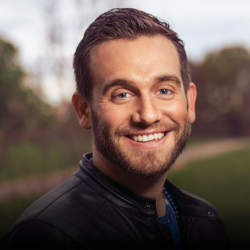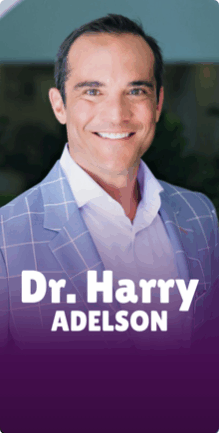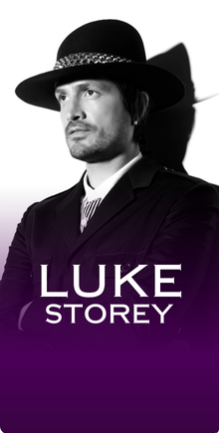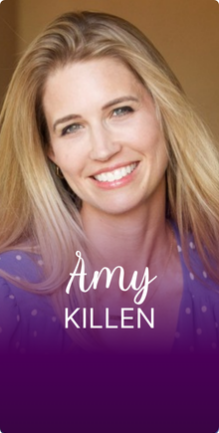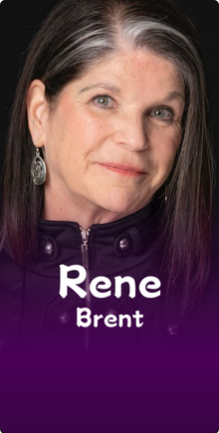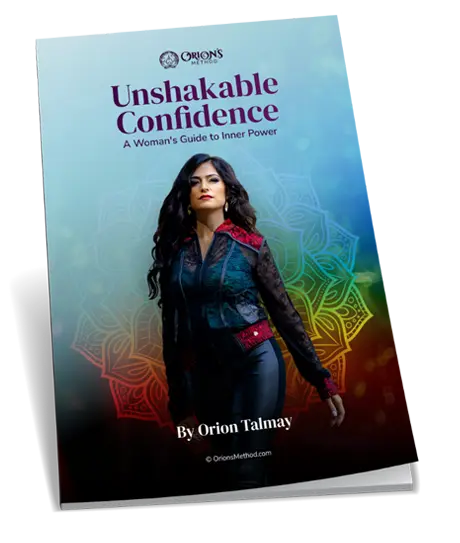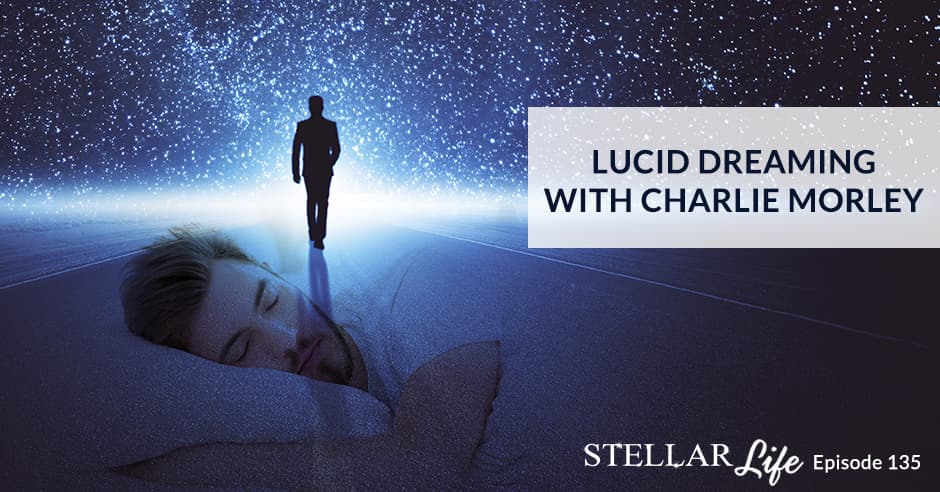
About Today’s Show
Welcome to Stellar Life podcast, Charlie.
Thanks for having me.
The reason why you’re here is that I’ve heard your episode on my husband’s podcast, Get Yourself Optimized. I remember we were driving in the car and I was so sad when the episode was over. I was like, “What? There are five more minutes left?” You sounded like a super cool guy. I was already excited to be talking to you. Also the content was an eye-opener and very wonderful. Why don’t you share a little bit about yourself and what you do?
My name is Charlie Morley and I teach something called lucid dreaming and mindfulness in dream and sleep, which is a holistic approach to lucid dreaming within the traditions of Tibetan Buddhism and Western mindfulness meditation. That’s also led me into the last few years doing work around shadow integration, which has a big dream component to it, but isn’t necessarily just dream work. My new book is my first foray into stuff that’s not dream work. It’s about embracing the dream of everyday life, about radical authenticity in the shared dream and then bringing that radical authenticity also into our nighttime dreams, especially our lucid dreams as well.
Lucid dreaming is being conscious in the unconscious. Share on XJust one thing, because I’m using the term lucid dream, as everyone knows what it means and maybe lots of your audience do, but for those who don’t, a lucid dream is a dream in which you know that you’re dreaming as the dream is happening. It’s one of those dreams where you’re sound asleep in the dream and you’re like, “This is a dream.” Then once you know it’s a dream, you can start to do stuff. You can interact with the dream volitionally. You could choose to fly about, you could choose to have sex with movie stars, whatever you like and there’s a whole side of it, which can be fun. You can say, “I’m conscious in the unconscious.” That sounds a little bit like hypnotherapy and it is. It’s like a very deep level of hypnotic trance. I would say, “Anything you can treat through hypnotherapy, you can also treat through lucid dreaming.” Similar things like working with addictions, post-traumatic stress disorder, increase in confidence, working with unbeneficial thought programs, skills rehearsal.
The Sports Science Association of Germany, there are some of the biggest studies about four or five years ago on the neural connections that can be made in lucid dreaming. Once they proved that you can change the actual gray matter density of your brain while you are lucid in a dream, they were like, “Maybe we can teach our athletes.” They will get athletes to learn lucid dreaming so that they could train in their dreams to get that edge in the Olympics. This is sci-fi stuff, but it’s true. Everything is there. You can Google everything I say if you want the studies.
First of all, I’m a big sci-fi fan. I had some meditation experiences where they were out of body experience and I touched different realms and it was super cool.
That’s interesting, that out of body thing. It’s interesting that I’ve been on your husband’s show and now you’re his wife because my wife teaches out of body experience. I do the lucid dreaming stuff and she does the astral projection, OBE stuff. She’s one to keep in mind for another podcast.
I know my husband has told you that on his podcast, which you have to go and listen to on Get Yourself Optimized. I was at Oneness University, it was a private group and we were studying with the monks who are avatars and we were doing tons of meditations and lots of experiences. The most powerful experience I’ve ever experienced in my life, which was extremely psychedelic, was when we were at the Oneness Temple. It’s a beautiful white temple. It was based on an 800 years old Mandala, and they say that the temple is alive. We were in this room and it’s beautiful. There are beautiful gardens around it, there are monkeys on the temple and stray dogs running around in the gardens. The avatars, the monks, they got into a trance state and they were walking among us. Before that, we did this breathing exercise that when we said, “I am existence, consciousness, bliss,” nonstop. You’re already hyperventilating by the time the 49 minutes end.
Do you say it in English or Sanskrit?
We said that in English. I love Sanskrit words but sometimes when they say a mantra, when I understand what I say, for me sometimes it’s even more profound. The monks came and they blessed us. We got zapped with this energy over and over again and I went flying somewhere like I was outside of the temple. There was a monkey on the top of the temple and I was laughing because I knew what he was thinking. At some point, I was in this orange vibrant, out-of-this-world type of orange colors. I was dancing with the monks and we’re all like little kids dancing. At one time, my body went flying and it got inside the body of a stray dog. It was the coolest thing, I could see the world through the eyes of the stray dog. I could see the gardens from the eyes of the dog. It was so cool. Then the monks hit the gong and while I was doing that, physically I was on the floor laughing out loud like I never laughed in my life. After that experience, my laughter changed. I used to laugh like holding back a little bit but now, I don’t care. It’s like something opened up.

You can tell a lot from the way people laugh. It changes the way you laugh. Some people might think it’s insignificant but it’s incredibly significant. Laughter is breath for one, that’s why they’re laughing. It’s like a form of Pranayama, but it’s a form of Pranayama that is brought on by joy. Think about what it does to us when we suppress our laughter. British people are the worst at that. Come on, let it go British people. That’s cool, you saw your laughter change. That’s a nice detail.
Just to conclude the story, it wasn’t affected by any substances and an hour and a half later, however the meditation was, they hit the gong and I was back. I was completely clear. When I came back to the US, I was able to be present with my clients. I used to have more of an ADD. I couldn’t look in people’s eyes, I couldn’t focus on their eyes for too long. I used to wonder, it would have been a little hard to have a conversation with me because I would like, “Squall here and squall there,” but I was so present. I get the present of being present. That was my experience. Let’s talk about you and lucid dreaming. Tell me about your spiritual experiences.
There’s this whole thing in Buddhism of not discussing your spiritual experiences out of context because it can lead to ego aggrandizement and stuff like that. Let’s discuss interesting things about spirituality. Lucid dreaming is a brilliant way to experience the spiritual because it shows you this infinite creativity. I love it when people say they’re not creative. I say, “Tell me a dream.” Even the most boring dream where you’re walking down a street, you designed that. You played every part of that. You were the lighting designer, you design the costumes, you wrote the script and that’s a boring dream walking down the street, let alone these amazing dreams we have.
When we become lucid, we start to see how brilliant the mind is in creating reality. That’s interesting because we have all these saints and sages saying things like what we see before us is less real than we think it is. It is more like a shared dream-like illusion that we, our self, are projecting into existence. This table sounds and feels pretty solid, but then you have a lucid dream and you can go into a lucid dream and tap the table and it sounds exactly the same. You’re like, “This is crazy because I know that I’m asleep right now. I know my body’s in bed and I know this is all a huge three-dimensional projection of my own mind.” It feels as real as waking reality. Then when you wake up and you hear one of the sages say, “What we see before us is more like a shared dream-like illusion,” you’re like, “Yes, it is. I can see that now.” It starts to open up your mind to the limitless possibility over the fact that reality might be different than how we think it is.
When we become lucid, we start to see how brilliant the mind is in creating reality. Share on XI also watched a short documentary where you were talking about lucid dreaming. You talked to the idea of oneness. When you are lucid dreaming, you don’t feel this angst of separation and it doesn’t matter if you are with somebody who’s tall or short or what nationality or what age or whatever. You feel that common thread and you feel that oneness with them.
In a lucid dream, you’re literally one with everyone. It’s not a philosophical concept. In a lucid dream, you’re like, “Everyone in this dream is me, not only the people are me but the trees are me. The air is me, the road is me, everything is me.” If I’m inside a three-dimensional projection of my own mind, everything is me. Everything seems separate but I’m aware that that separateness is an illusion. Things that seem outside of me, I know it inside of me. Things that seemed to be dualistically existing are in fact non-dual projections of my own mind. That does something to you. If you can have enough of those experiences of seeing, of entering into a reality that seems as real as waking reality but having the absolute knowledge that it is not a separate reality. It is a reality that you’re creating, then this whole idea of oneness becomes much more palatable.
This is one of the cool things about lucid dreaming. It allows you to explore some big philosophical concepts like oneness in a practical non-philosophical way because in a lucid dream, there is no question about it. You are literally one with everything. You could throw up the thing that people like, which is, “Everything in the lucid dream isn’t you.” There are the entities and shared things and stuff like that. I have this theory that 99% of everything in the lucid dream is you. There might be a crucial 1% of collective unconscious and shared archetype and stuff that might be not all you, but 99% of it is you.
In astral projection in OBE, those percentages are flipped. It’s 99% everything else and 1% you. It’s not that I’m saying we can’t enter into other dimensions of reality, I’m saying in a lucid dream that’s not what’s happening. In a lucid dream, you’re entering into your own reality. You’re going inwards. Whereas in an OBE, an out-of-body experience, you’re projecting out into shared reality. In a lucid dream, it’s you in there, we can see it’s you in there because it has your shared fears. If you’re scared of spiders in the waking state, what are your fears in the lucid dream state? If you’re secretly in love with someone in the waking state, who keeps popping up into your lucid dreams? It’s like we know that it’s our mind in there, but that doesn’t make it any less fascinating. I’ve got so much baggage to deal with in my own mind. I could spend a whole lifetime lucid dreaming before I even get to the out-of-body state.

How do these get into our dreams? I love Sherlock Holmes and I haven’t watched it in a long time. I was watching the last season, which was a little bit disappointing. They created it more like less Sherlock and more of a horror film. The very last episode was creepy and I watched it right before bed and then I had the worst nightmare. I was traumatized the next day. Tell me about how this is working and how can we avoid it?
We don’t want to avoid it. A nightmare is a very good sign. You watched the thing that traumatized you. If you don’t want it, then don’t watch the trauma. I’m being silly here, but you watched something that was vaguely traumatic. It was a scary thing. Then you’ve got to sleep. The genius of your mental makeup, the unconscious mind is an absolute genius, has gone, “We’ve got some traumatic material in here. We need to process it through the psyche.” How are we going to do that? We’re going to do the same thing you do with the therapists, where the therapists get you to talk about the traumatic event. The dream isn’t working in talking, it’s working in imagery. It is going to replay a similar image to the one that traumatized you and that’s what we call a trauma-induced nightmare. Maybe you dreamed of some of the scary things which appeared in the Sherlock Holmes thing that traumatized you. From a psychological point of view, that’s good. That’s the genius of your mind, like going into an internal therapy session so that the next day you are less likely to carry that trauma with you.
However, you might carry some residue from the nightmare. Often after a nightmare, we don’t feel so grateful to this internal therapeutic system because we feel like, “I feel a bit shit. I’ve had a nightmare.” Far better, we feel a little bit shitty for a few hours after a nightmare than we didn’t have the nightmare and we hold that trauma with us for a long time. That’s the current thinking on PTSD. Ten years ago, nightmares were seen as a sign of a broken mind. If you’re having nightmares, that means you’re still traumatized. Nowadays when you work with severely traumatized PTSD subjects, nightmares are a good sign. You want to be having nightmares off the traumatic event because it shows that this internal therapeutic system is at play. It is working through the mind. In fact, when people have deep trauma, they may well not have nightmares for many years, which is why often with PTSD in veterans, post-traumatic stress disorder, on an average it’s like ten years for the nightmares and the trauma to start being released because the things that traumatized the veterans were so heavy that they sunk so deep into the psyche. It took ten years for them to rise again. My point is to have a nightmare the night after something that traumatized you, that’s brilliant. That’s like your mind was very clean. It was very quick. It went into therapy mode and pass that through. We should be grateful for those nightmares. I know it sounds completely counter-intuitive, but this is mainstream science now.
Lucid dreaming starts to open up your mind to the limitless possibilities over the fact that reality may be different than we think. Share on XYou told me that you’re going to the US to do research about veterans.
Everything on my mind at the moment is about nightmares, veterans and trauma because I’ll go to America and Canada for this research scholarship I got from a UK NGO called the Winston Churchill Foundation to study best practice in mindfulness-based PTSD treatment. I have to go around Canada and the US studying with some of the top guys and ladies in the field of PTSD and trauma. Then I have to come back to the UK and present my findings and make a lot of workbooks and present a new workshop for UK veterans and trauma survivors.
You might want to also check my episode with Dr. Helen Irlen. She invented the Irlen glasses, which are colored glasses that some people that suffer a lot from PTSD and even veterans wear.
I’ve been reading about that, the colored sunglasses thing.
She was talking about how she had this family that was suffering because the veteran had a lot of PTSD. When he gets those attack, the wife and the kids had to close themselves in a room. He got healed just by wearing those glasses.
Where is she based?
She’s in California.
I’m in San Francisco traveling around, meeting anyone to interview in this project so who knows. That’s good to know.
After I listened to your episode, I took a little nap and I was a little lucid and then I woke up excited. Can you give the audience a little beginner guide on how to start lucid dreaming right after this episode?
What you did is pretty good. Napping is good. Napping is a short period of sleep, usually under 90 minutes, which is outside of your main monophasic sleep cycle. People often say, “What counts as a nap? What if I’m working night shifts? What if I do this? What if I do that?” A nap is just any short period of sleep outside of your main chunk of sleep. You have each 24-hour period. The cool thing about a nap is that when you nap, you go straight from the hypnagogic state, which is the transitional state as you’re falling asleep into dreaming sleep. At nighttime that doesn’t happen. In the nighttime, you go hypnagogic, then into a light sleep and a big chunk of deep sleep, then dreaming comes at the end of the cycle. When you nap, you hack the system and you go straight into a dream.

First of all, napping is brilliant for lucid dreaming. Obviously, nighttime lucid dreams are even more common because you’ve got much more sleep for them to occur in, but daytime naps are brilliant. They’re also good for your cognitive health and good for your learning capacity. They make you live longer. We could do a whole episode on naps. For anyone, have a nap. Never have nap guilt. When I was in my twenties, I had nap guilt. I was like, “I can’t be napping during the day. I want to change the world.” Now I’m in my 30s, I’m like, “If you want to change the world, take a nap,” because anything you do after a nap, you’re better. You can see the brain research on this.
Anyway, back to the lucid dreaming thing. The first tip I’d say would be to recall your dreams and write them down. Unless you’re regularly remembering your dreams, it’s very unlikely you have a stabilized lucid dreaming practice. A lucid dream is knowing that you’re dreaming as the dream is happening. To get to the stage where you know that it’s a dream as you’re dreaming, you need to get to know your dreams well. You need to get to know, “I always dream of my dead grandmother, I always dream of the beach we went to when I was a kid. I always dream of being back at school.” Until you know the content of your dreams, how are you going to be able to go, “This is a dream right now?”
Logically, the first step that we need to do is work on our dream recall. Anyone who thinks, “I don’t remember my dreams.” I’d say, “When did you last try?” This catches a lot of people. They think it’s a trick question. I’m like, “No, it’s not tricksy. When did you last try?” They go, “I don’t know, years ago.” I said, “Tonight, try it. Before bed, set that intention and go ahead, “Tonight I’m going to remember my dreams.” Set that strong motivation and intention to try and remember.” Just like before you go to the shop and you think, “I’m going to try and remember to buy some bread. I must not forget this time. I’m going to try and remember this time.” Then you pass the shop, “I needed to buy some bread.” We set that intention strongly before bed. Then the next thing to do is when you wake up either in the morning or in the middle of the night, because we’ve all had that thing where we wake up at [3:00] to pee and we’re like, “I had the craziest dream. I’m never going to forget this. I don’t need to write it down.” Then you pee, you go back to sleep and you totally forget the dream.
Write down your dreams whenever you remember them, even if it’s in the middle of the night. You don’t need to write down every little detail. This isn’t about dream interpretation, it’s about spotting patterns. It’s about writing down the major narrative, the major themes, a bit like reviewing the film. Then in the morning, you can look back over those and see what’s in that dream last night that could have indicated that I was dreaming? You read it through and say, “In the first dream, I was walking down the street with my wife in London. Nothing there that could indicate I’m dreaming. Then later, I’m back at school and then my dead grandmother appears and then suddenly, I’m back on that beach where I was a kid.”
I started noticing the patterns of my dreams. I started noticing what is called dream signs. The more you become aware of your dream signs, the more likely you are to become aware of them while you’re dreaming. That’s what leads to most of what people will call spontaneous lucid dreams. Lucid dreams are hardly ever spontaneous. If you ask people how they became lucid, most of the time they’ll say, “I was in the dream and then I saw this weird thing and I thought that can’t be right, my brother doesn’t live here anymore or my grandmother died twenty years ago, whatever. I must be dreaming.” We’ll only get to that point once we get to know the content of our dreams. Setting your intention to remember your dreams, keeping a dream diary, and then spotting your dream signs, those things that can only happen in your dreams and making a trigger that if you were to see those things again, you’ll definitely know you’re dreaming. Those are three easy steps that people could do tonight.
When you lucid dream now at your level, what changed between the first time you started and now?
I learned to lucid dream at sixteen. I spent the first two years just having sex. The lucid dream is so realistic. You can feel, you can taste, you can touch, which makes lucid dream sex very seductive. When you’re sixteen years old and not getting much, you’re going to turn to lucid dream. I was lucid dreaming every night because I had a real incentive of, “I want to go back into that state.”
Lucid dreams are hardly ever spontaneous. Share on XYou’ve got a lot of experience at sixteen.
In the dream state, so much in the waking state, I wish. When I was eighteen, I got into Tibetan Buddhism and they started saying there’s this thing called Dream Yoga, which was like the spiritual practice of lucid dreaming. When I first heard it I was like, “No, this isn’t spiritual practice. I know what I use my lucid dreams for.” Then the monk started telling me and I was like, “This is a real thing.” They use this practice that I’ve inadvertently taught myself how to do for big spiritual aims. I got into Buddhism quite seriously when I was nineteen and then I got into the dream yoga stuff and then it all changed. I realized that this was a place for spiritual practice. This was a place for healing. I had some bad nightmares too and I cured them through lucid dreaming. In fact, that was the turning point. It wasn’t even the Buddhism. It was when I had these bad nightmares.
I had read that you could use lucid dreaming to cure nightmares, but at that time I would use it for sex and skateboarding and fun stuff like that. I thought I’ll try it because these nightmares are getting so bad, I was scared to go to sleep. I did get lucid and the first two times I bailed, it was just too scary to face the nightmare but on the third one, I stayed in the nightmare. I literally faced my fears and I said, “I see you, I know I’m dreaming, I know this is not real.” It completely transformed. Then I woke up and I never had the nightmares again. I had these nightmares every single week for four months and then overnight in one lucid dream, they stopped. At seventeen that was impressive to me and I was like, “This is serious.” That’s when I started looking into Buddhism and then found out that there was the whole Dream Yoga thing.
You became the master of your mind.
I don’t know about that. I’m definitely no master of my mind, but more of a master than I was.
You are the master of that trauma, you took control of that. You don’t work on your biggest trauma right away. You start small. What if somebody has something small that they want to work on?
I would say go for it. There’s a woman who came to my retreat in Wales. She had never had a lucid dream before, no experience. We do this thing called Dream Planning where I get people to draw out the lucid dream that they want to have. It’s like an art therapy exercise but also it’s like a manifestation exercise because you’re writing and drawing what you’d like to happen in your first or next lucid dream. In her first ever lucid dream, she wanted to meet his seven-year-old self because that was the age that she experienced some abuse. She wanted to go back and meet her seven-year-old self and heal the little girl that lived within her. I saw this dream plan that she had drawn. I was like, “This is pretty serious.” I said, “How much experience have you got?” She was like, “I’ve never had a lucid dream before, but you said aim high.” Who am I to stop this?
I remembered something my teacher had said. I’ve got two teachers, one is a Tibetan Buddhist master called Lama Yeshe Rinpoche and the other is a former Jungian criminologist called Rob Nairn, who took the Western psychological routes and then he did a four-year retreat and became a Buddhist teacher as well. He said something from Jung that the shadow will only give you what you’re ready for. There was an intelligence within the psychic operators that strive for balance. I was remembering this and I thought if she calls to meet her seven-year-old self and the trauma’s too heavy, it will be blocked. I’ve seen that with my own trauma when it’s blocked. I thought, “Who am I to say no? Let her do it and what’s the likelihood she’ll get lucid on her first night?” This girl nailed it. The first night of the retreat, first ever experience lucid dreaming, she gets fully lucid in the dream. It’s like, “I’m lucid. What did I want to do?” Full access to waking state memory. She remembered her dream plan. She calls out, “Seven-year-old self, come to me, seven-year-old self, come to me,” nothing happens. She called out the third time, “Seven-year-old self, come to me,” the dream had blocked it. She wasn’t ready to meet her seven-year-old-self. The third time she called it out, the dream gave her something else. A doorway appeared right in the dream in front her, this door appeared.

On the door was a sign and the sign said, “Caution.” You know the symbolism of that, the dream of a door with caution on it. I said, “What did you do?” She went, “I thought if the door’s locked, I’ll leave it and I’ll wake up or I’ll fly away and do something else in the dream but if it’s not locked, I’ll go through it.” I was like, “Good idea.” She said she pushed it, it opened and then it led to a building with three stories and on each story of the building were a different symbolic representation of the abuse. In a lot of my workshops, I say that if everything in you is a lucid dream and even if some of it isn’t, the most important thing to do is to show love to everything because love is the most powerful force in the universe.
I always tell people to go around and hug everything in your lucid dreams. Hug the people, hug the trees, hug the floor, hug the tables and if it’s all you, show it love and that will have a very powerful effect on the mind. She went into the room. It was a room full of vomit because one of the things that happened was she was forced to eat until she vomited. She is so sweet, she said, “How do I hug vomit? What do I do?” Instead, she walked into the room and she called out affirmations of healing saying, “I let you go. You are free. I set you free, my seven-year-old self,” and she had a very powerful emotional response and a very powerful healing. I met up with her about a year ago because I included that dream in my new book. I need her to sign off on whatever it’s called, to say that it was okay to use it in the book.
I asked her, “How have the last few years been?” She said, “I want you to let people know when you tell them this dream, that that dream wasn’t the end of the healing, it was the beginning.” She said once she had that lucid dream and saw how the mind can be healed through lucid dreaming, she then opened up to other things like talking about it more. In fact, healing the relationship with the family members that led to that dream. She said, “That could only happen once I had that dream.” It wasn’t that the lucid dream finished it, it was the lucid dream that began the healing and led to an even greater healing in the waking state. That was our first ever lucid dream. Since that day, I thought, “Who am I to tell people to go slow?” If the trauma is there and it’s ready to be healed, this could be the last night of our life. Who knows? We could be dead tomorrow so tonight, we heal.
The dream is not the end of the healing; it is the beginning. Share on XWhat’s a dream plan?
On my Instagram, someone asked me that question and I took a photo of twenty of my dream plans and put it on my Instagram, so people can see them. It’s like an A4 piece of paper and it’s in three stages. The first stage you would write, “In my next lucid dream I,” and then you write a description. Perhaps, “In my next lucid dream, I call out to meet my inner child, embrace them with love and heal any and all residual childhood trauma into the oneness of myself.” You write quite a word, almost poetic description of the healing or the dream plan that you’d like to do. Then step two, you draw a picture of this. The dreams work in imagery, not in words. The intellects work in words, so we tick that box off and then step two, we start working with the dreamer itself, which is working in images. I just draw a stick-man picture. I draw a little stick-man Charlie and a child and then an arrow and then show me hugging them. I’d write words around it like integration, love, fulfillment and whatever it is.
You can’t get this wrong. It’s like art therapy, it’s not about how good the artwork is. It’s about expressing the dream in visualized imagery, in visualized form. Then step three is called the Sankalpa. Sankalpa is a Sanskrit word, which means will or intent. It’s like the call to action. If my dream plan was in my next lucid dream, I call out to meet the inner child and embrace them with love and heal my child, the actual Sankalpa, the call to action, the thing that you say out loud in the lucid dream might be “Little Chuck, come to me. Inner child, come to me.” Mine is, “Little Chuck, come to me,” because when I was a kid I used to be known as Chuck. I know that’s my password that links me into my inner child whenever I’m doing a child work. That’s the three-step process. That’s the full technique. Anyone reading this, that’s how you do a dream plan. If you combine that with the three steps of lucidity that we did a few minutes ago, you could get lucid tonight.
Is there any physical healing that is happening through lucid dreaming?
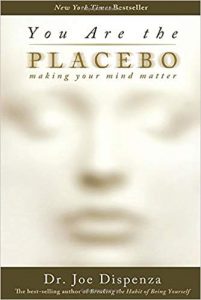
Yes. I always like to give the spiritual and the scientific and then let people make up their own mind. The science on physical healing with lucid dreaming is inconclusive. People like Joe Dispenza had been very helpful and very kind about sharing my work with people. Joe Dispenza wrote the book, You Are The Placebo. He knows all about this, how powerful the placebo effect is. Current mainstream science says, “If any healing occurs through lucid dreaming, it must be through a type of elevated placebo effect.” I don’t care what they think is the proof or not, but I know it works. If the placebo effect is the mind affecting the body, imagine how powerful the placebo effect is if you do it within a lucid dream. It’s because you’re inside your mind already, it’s the placebo effect times a thousand.
There had been verified accounts. I’ve done it. I did my eyes. I used to wear glasses. In fact that documentary you saw, I was wearing spectacles. I don’t wear them now. It took three lucid dreams before I healed my eyes. I can’t explain to you how it works, but I know it works every day when I go to the theater, when I go to the cinema, when I’m teaching. I used to not be able to see the back of the room. I used to not be able to see the cinema screen. I’m reminded that that healing worked. The scientific literature says it could be a form of elevated placebo effect. People like Joe Dispenza back that up a lot. They’re like, “That’s obvious.”
From a Buddhist point of view, it said that once you’re in the lucid dream state, you have seven times the power of the mind. Right now, our minds can do certain things. In the lucid dream state, you have seven times the power. It said that anything you do in the lucid dream state such as spiritual practice, such as healing, such as sending prayers to a loved one or someone who needs them or to the world, times by seven. Their view would be, who knows about the placebo effect, the reason it’s working is that you have seven times the power. Your healing capacity is times by seven. Who knows? It seems to work. I wouldn’t want to give anyone any false hope. I can’t say I’ve worked with anyone who’s used lucid dreaming to cure cancer, but I have worked with people who’ve used it to work with chronic renal failure, which is like a form of kidney disease. I did my eyes. I’ve also done a few martial arts injuries.
I know other people who’ve done minor ailments like sore throats, digestive problems, menstrual cramps, stuff like that. Lucid dreaming can definitely heal those. I’m yet to say I know anyone personally who’s healed one of the biggies, like cancer or something. I think it would be very irresponsible of me to share other examples because I think there are some other lucid dreaming teachers who claim that has been done but I haven’t seen it with my own eyes, so I can’t confirm that.
Even if somebody cannot heal a severe condition, it can help them. Even if it heals the trauma around it, they already healed a lot of the symptoms.
When people go, “Where’s the proof of lucid dream healing for the big conditions?” I said, “We’ve got proof that lucid dreaming can heal trauma. We know that, that’s why I’m doing this thing with the military.” I’d be working with the British military because they’re interested in how lucid dreaming can heal aspects of PTSD. If we open up to the possibility that some physical ailments may be, if not caused by, exacerbated by pre-existing psychological trauma, then if lucid dreaming can cure that, which it definitely can without a doubt, we could say there’s a very strong possibility it could work with heavy physical ailments too.
Can anyone lucid dream?
Yes, everyone does. A Harvard study that came out years ago, which was a peer review of a previous study. They confirm that lucid dreaming is a natural arising of the childhood mind. Around the age of six, seven, or eight, most kids started reporting lucid dreaming. Not every kid every night, but the Harvard study showed that they believed it was due to a growth spurt in the prefrontal cortex because the part of the brain that lights up when you get lucid is the prefrontal cortex. Around that age, you have a growth spurt in that part of the brain. When does our growing happen? It happens in sleep, not when we’re walking around but when we sleep at night. If you activate the prefrontal cortex when someone’s asleep, they’re going to have a lucid dream.
The interesting thing about that study though is that it shows that people don’t need to learn how to lucid dream. They need to remember because most people will have had multiple lucid dreams like children, they’ve just forgotten how. They’ve forgotten the lucid dreams and they’ve forgotten how to do it. It means lucid dream isn’t some alien imposition. It isn’t some weird thing that we forced the mind into. It’s actually a natural expression of the mind that we somehow forget to do when we grow up. It reminds me of that quote by Picasso, “Every child is born an artist. The adults’ task is how to remember that skill.” The same with a lucid dreamer. It seems like every child is born a lucid dreamer. The adults’ task is to remember how to do it.
Who knows? We could be dead tomorrow so tonight, we heal. Share on XWhen one does lucid dreaming, can it lead to different manifestations in the physical realm?
Yes, I can’t offer the science on this because there’s no science that’s going to back this up, but I can talk about the Buddhist view on it. One of the main reasons that Dream Yoga or lucid dreaming is practiced within Tibetan Buddhism is because it says to have an effect on the way we view the waking world. Every time you have a lucid dream when you have this experience of oneness within a projected, seemingly separate reality of the lucid dream, you get a little drop in the bucket of oneness. If we could be in a state of full oneness in this dream, in the shared dream of the waking state, like if we can be fully awake, fully lucid, we would be able to interact with this dream of reality as we can in our lucid dreams. That means literally the ability to fly, the ability to walk through walls, the ability to appear in two places at once.
If you look at the stuff that Jesus did, he walked on water, he made one loaf of bread suddenly turn into a thousand loaves of bread. If you look at the Dream Yoga teachings, the very ancient ones, they say, “Once you are lucid, walk over water, knowing that you cannot fall. Make one thing many.” I’m looking at the miraculous stuff Jesus did and I’m like, “Wow.” Jesus was a Buddha. He was fully awakened and if you’re fully awakened in this reality, you can manifest things as you would in the lucid dream. Then let’s rewind a little bit. What about people like you and me who maybe aren’t fully awake but maybe were more awake than we were? Then perhaps we would also be able to interact with this dream with a little bit more lucidity, a little bit more compassionate, a little bit more seeing the people in the street like our dream characters.
If you walked down the street and you imagine you’re in a lucid dream, then there are no strangers in the world. Suddenly the person who walks past you who looks grumpy, you think, “That’s part of my mind. That’s my shadow aspects. Maybe I should go and hug them.” In a lucid dream, you hugged them and they dissolve into a light but in this state, maybe you don’t want to hug him, you might get a punch on the nose, but you can send them a mental hug. Other weird things happen like I’ve had a couple of people who have done dream plans. One of the veterans, he did a dream plan for curing his nightmare. He did this three-step process that I said with the drawing, the dream plan and everything. The process of him creating the dream plan and speaking it out loud was so powerful that his nightmares stopped. He’s always teased me since then, “I don’t know if lucid dreaming works because I never had my nightmares again.” The lucid living aspect was strong that he created a manifestation in this shared dream of the waking world that stopped his nightmares. I think it’s definitely possible.
When I’m thinking about the practice of physically doing the whole idea of lucid dreaming and waking up, will I wake up tired if I’m awake all night?
Having a lucid dream is the most untiring thing you can do. Let your brain goes into heavy gamma. You wake up buzzing with the achievement of having a lucid dream. You can heal trauma while you’re in the lucid dream. Lucid dreaming itself is incredibly energizing and do the opposite of tiring. However, learning to lucid dream can be tiring. Just like learning yoga can be tiring, just like learning new martial arts can be tiring but are we not going to learn anything new because it’s tiring? Name one thing to learn that isn’t tiring. The first few months of learning any new sport, any new yoga or any new martial arts can be tiring because we’re using new muscle groups. It’s exactly the same as the internal work too. When we learn a new type of meditation or a new type of dream work like lucid dreaming, it can be quite tiring because we’ve got to keep a dream diary. We’ve got to wake up at certain times of the night. You keep that going for a couple of months and you adjust, your sleep cycle changes. In fact, you start sleeping better.
A lot of insomniacs are into lucid dreaming, where it seems like a paradox because if you’re insomniac you’re like when some crazy dude telling you to wake up in the middle of the night and write down your dreams. Yet paradoxically, insomnia is the process of trying to fall asleep. If you give insomniacs something else to try and do and you said, “Don’t fall asleep quick. I want you to fall asleep slowly,” or you’re saying this mantra, “I don’t want you to sleep through the night. I want you to wake up every few hours and write down your dreams.” It’s such a revolutionary approach to offer an insomniac that they dropped the notion of trying to fall asleep and with that, they dropped their insomnia. Weirdly, lucid dreaming has solved a lot of people’s insomnia problems because it’s given them something else to do rather than try to fall asleep.
What’s your evening ritual? Do you lucid dream every night?
No, I’m not a natural lucid dreamer either. If I want to lucid dream, I do have to do a ritual. That’s why I’m suited to teach it too because I know the struggle and I know the techniques work because if I spend a couple of weeks not doing the techniques, I stopped having lucid dreams. The perfect ritual, and this is the one that we do when we do the sleepover retreat. I run these four days sleep over retreats, where during the day it’s like a lucid dreaming workshop and then the real kicker starts at night. The workshop is still long. It’s from 9 AM until 9 PM and then you can choose just to go to bed and I’ll see you at breakfast or you choose to go back to your room and you bed down from [10:30] PM to [3:30] AM, you sleep in your own room, just get your deep sleep, restore your body. Then if you want, and about half the group usually choose to do this, you set your alarm for [3:30] AM, you wake up, you get out of your bed and you come into the shrine room or the workshop area where you have a sacred sleeping area set up. You have two beds, one in your room and then one camping bed setup that you have in the sacred sleeping area.
You come in at [3:30] AM and there I am, chanting in Tibetan and all this kind of stuff. The lights are low. You bed down and then I guide you back to sleep again for another 90-minute session. Then 90 minutes later, the Tibetan gong starts going, I wake everyone up slowly, the lights come up. I encourage you to write down your dreams. We write them down, I give you your next practice and then you fall back to sleep doing that practice. 90 minutes later, the same thing again, lights up, gong, practice, back to sleep, 90 minutes later, the same again. You have four wake ups a night because if you fall asleep once and wake up once in the morning, you’ve got one chance of remembering your dreams, one chance of doing the lucid dreaming practices, one chance of spotting your dream signs.

There’s some crazy guy that wakes you four times a night, you’ve just quadrupled your chances of success. That multiple wake ups technique, which is what that is called, is really effective. Also creating a divide in the night with the Mexican shamanic practitioners called cutting the night. You have the first four and a half hours of the night, you just sleep. Just get deep sleep, just knock yourself out, go deep. Then you wake up and you cut the night and you say, “That was my sleep for my restoration,” and now the next four and a half hours, when you start going into the long REM periods, and REM isn’t restful anyway, that’s when you start the spiritual practice of the night. That’s really good and that’s literally a nighttime ritual. When we do the retreats, I was doing that in Scotland, we had four nights of that, which means you’ve got twelve chances of lucid dreaming rather than four chances if we were just there for four nights.
How do you function the next day?
It depends. This one is good because we didn’t have any snorers. I’ve been in this for ten years and this is the first retreat where we had no snorers. Unfortunately, that meant that I slept well. The next day I was on form for the workshop, but I didn’t have much lucidity myself. Whereas usually on those workshops, because there are snorers who I have to wake up and let them know they’re snoring or people can’t get to sleep so I need to get them more blankets and stuff like that. I don’t have four wake-ups, I have ten wake-ups, which gives me even more chances to lucid dream. Usually, those retreats are good for me because I can do a lot of lucid dream practice.
This last one was so peaceful and I slept well and rested, I didn’t have much lucidity. By the way, that’s just one technique. My wife thinks that the technique is nuts. She’s like, “How do people pay money for you to wake them up four times at night? That’s crazy.” Her technique is completely the opposite, which is just to stay in bed for a long time. If you don’t like the idea of waking up four times a night, the other way to do it is just stay in bed for a long period, get nine hours sleep, nine and a half hours sleep. Then if you get that much sleep, the ballpark for dreaming becomes so big that eventually, you’re probably going to recognize it. If anyone thinks that sounds like a nightmare waking up four times a night, you can do my wife’s technique, which she calls the really long sleep. Once a week, give yourself a long sleep like nine and a half hours. Then by the end of it, you’ll be so refreshed that you won’t be very deep. You will be popping up into the hypnopompic and popping down into the dream, up into the hypnopompic, down into dream, giving you loads of wake ups in the morning for which you can get lucid.
What’s the science behind the outside temperature? Sometimes if I get really hot, I go into nightmares.
A lot of people sleep with a room that’s too warm. You want your room to be cool. When you stick your foot out of your duvet, it should be cold. You should want to put your foot back under. If you can sleep with your foot outside of the duvet, your room is probably too hot. That’s one way you can tell using your body temperature. I don’t remember the exact Celsius for the optimum sleep conditions but generally, you want it a little bit cold. When you go to sleep, your body moves into a thermal regulation wave. If the room is too hot, you can’t go into that wave and you don’t sleep as deeply. In fact, if it’s very hot or if you are very hot because you have a fever, for example, you might notice that you have nightmares, so keep the room cool.
You said that the dream is all you. Can you meet your angels or spirit guides in the dream and are they like you or some other entity that comes and says hello and gives you guidance?
If everything in the lucid dream is you or 99% of it is you, that doesn’t mean you can’t call any things into the lucid dream. What I mean is the base level of the lucid dream is 99% you, you’re the boss in there. It’s all you. You can use the lucid dream as a place to invite things in, which could be things like spirit guides and angels and stuff like this. People can get into this and I used to be into this, like calling things into my dream and trying to find out, were they separate from me or were they me? Then the more I got into Buddhism, I kept coming up to this term of the inner guru. From a Buddhist point of view, the inner guru is way higher than the outer guru.
When I was trying to call my outer guru, Lama Yeshe Rinpoche, into my dream, I was actually missing the point because far better would be for me to generate an internal representation of Lama Yeshe within my lucid dream who is part of me because that would be the inner guru. I did talk to my teacher about this. I was in an interview with him and I said, “Rinpoche, I have a lot of lucid dreams where I call you into the dream. Is it just my projection or is it you?” He went, “When I appear in your dreams, most of the time just projection.” I went, “Most of the time?” He went, “Yes, some of the time,” and he would just chuckle. I was like, “What does that mean? Was he about to tell me sometimes it’s me?” It was almost like he thought better of it. Like he was about to say it and then he thought, “No, this is going to freak this kid out. I’m just not going to say it.” That chuckle, I swear, the look in his eyes. I think that’s probably true when he said most of the time when masters appear in your dreams, it’s not them, it’s just your internal version of them, but sometimes it is them. The same rule applies whether you’re meeting your internal angel or whether it’s an external angel projected into your dream. He’s an angel, be happy, show them love. It shouldn’t change anything. We should treat both our internal environment and our external environment exactly the same, with pure love.
Once you’re in the lucid dream state, you have seven times the power of the mind. Share on XYour Buddhist teacher sounds like Yoda.
He looks a bit like Yoda too. That moment he looks like Mr. Miyagi from the ‘80s Karate Kid. He has grown his beard. You can look him up online, Lama Yeshe Rinpoche. He’s the Abbot of Samye Ling Monastery in Scotland, but originally from Tibet.
What are your three top tips for living a stellar life?
Be kind is probably the most important thing. Spiritual life is not about having ecstatic experiences and Kundalini awakenings and all these things that we strive after. It’s about being kind. If you can be kind, that’s the real miracle. It’s not the fireworks. It’s the, “Can we be as kind as we possibly can to myself and others?” Kindness is a top tip. The second one is to see people a bit more dreamlike. When you’re in your everyday life, if you can just stop and think, let’s say you’re waiting in a queue in a bank or something and you’re, “This is so long. Why is this queue so long? Why is this person pushing in front of me in the queue?” If you can say, “If this is a lucid dream now, how would I respond?” Very often you’d go, “If this is a lucid dream, I’ll just chill.” I’d start looking at everyone in the bank and thinking they’re part of me, they’re part of my mind. What’s the symbolism here of me being forced to wake and what’s the symbolism of the bank? The bank symbolizes abundance. I’m going to cue of abundance here.” It’s just a play. I’m not saying we do it so much, we move into psychosis, but just to play with that idea that life is more dreamlike than it seems. If it is more dreamlike than it seems, let’s respond to the dream as we would do in a lucid dream which is with love, with the awareness that it’s part of us, with oneness. That’s my second tip.
The third tip, have fun. A lot of people get into the spiritual path and have this idea that if it doesn’t hurt, it doesn’t work. Look at the statues of Buddha. He is smiling in every single statue, whether it’s Tibetan Buddhism, Japanese Buddhism, Chinese Buddhism, Buddha is smiling because he’s having fun. Smiling is allowed. In the spiritual part, sometimes it’s hard and sometimes it hurts, but it should be joyful as well. There should be a sense of fun to it. I tell people not to take this stuff too seriously. I was literally embedded in Tibetan Buddhism for almost eight years, living with monks and nuns and my top tip for them is don’t take it too seriously. The people I saw there, the monks and nuns who were the most successful on the path, who were the most able to put these teachings in the practice were those who are joyful, were those who didn’t take themselves too seriously, were those who had fun with it. Be kind, treat everything like a lucid dream and have fun. Those are my tips.
Where can people find you and connect with you and maybe participate in your workshops and read your books?
My website is the easiest hub for that, CharlieMorley.com. Even if you forget my surname, if you just typed Charlie lucid into Google, all my stuff will pop up. I’m on Instagram, @Charlie_Morley_Lucid_Dreaming. I’m on Twitter, @CharlieMorley1. I’m on Facebook, Charlie Morley, Lucid Dreaming and Shadow. I had made a very bad spy because you can find me very easily.
Thank you so much. I really appreciate you being on the show.
Thank you. It’s been a pleasure.
Thank you. For the readers, I suggest taking the time to practice and go lucid. Try it, why not? What can happen? Only good things, so go do it and have a beautiful rest of your day.


